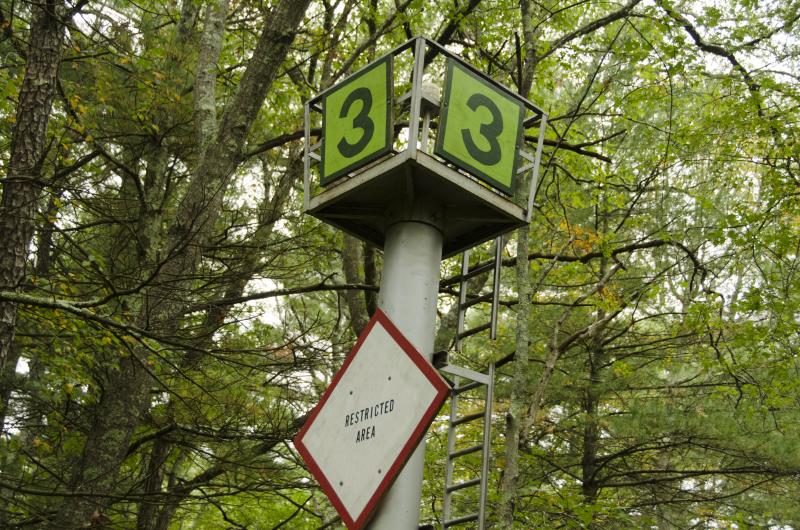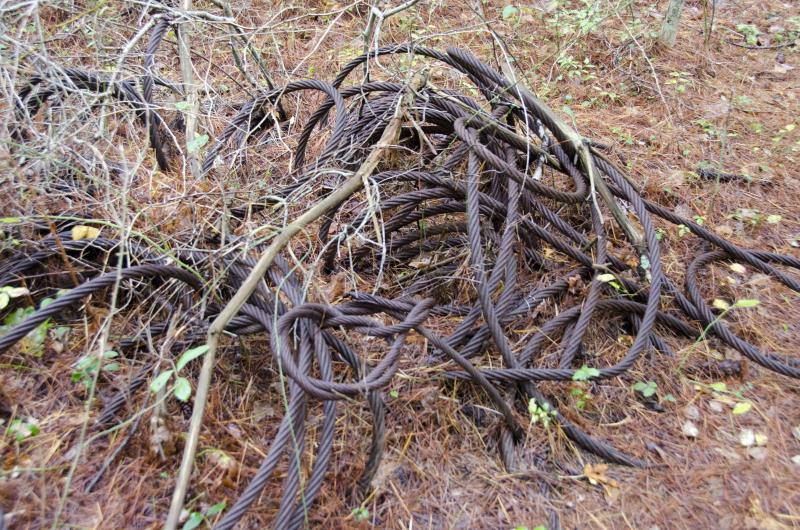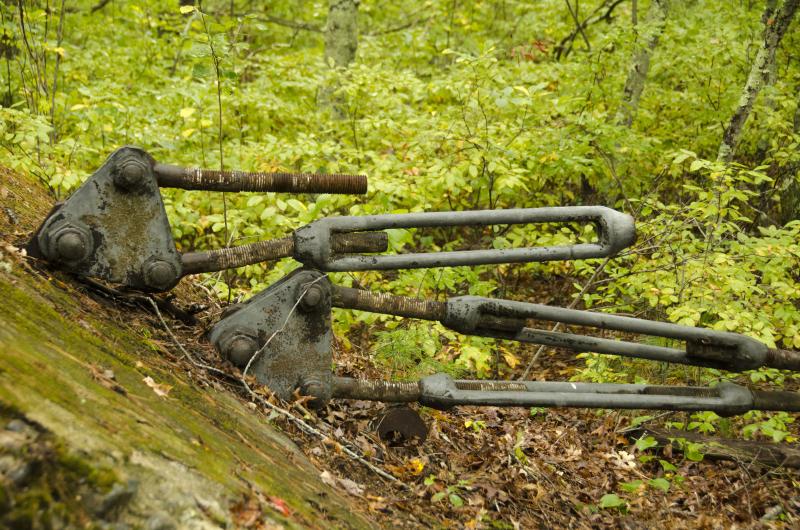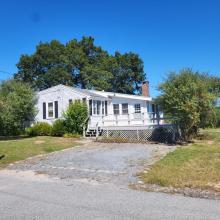Trail offers glimpse into early days of wireless communication
If someone were to come upon the trail at the end of Benson Brook Road, they might think they’d stumbled on the remnants of a secret government project or perhaps an episode of “Lost.” Wires an inch thick grow out of the ground like tree roots, cement blocks sit in the brush covered in moss and thick pieces of broken pottery are strewn here and there.
While an imaginative mind could come up with all sorts of conspiracy theories, the explanation is somewhat less mysterious but no less interesting. Fifty years ago, the land was a wide-open field with 14 400-foot radio towers that transmitted transatlantic signals.
Installed in 1914 by the Marconi Wireless Telegraph Company, the towers were so big they could be seen from Buzzards Bay. One hundred years later, the Sippican Lands Trust and Sippican Historical Society remembered the historic installation, including a walk through the property on Saturday.
Guglielmo Marconi set up two stations in the area, a receiving station in Chatham, and the transmitting station in Marion – which was just far enough away to prevent interference.
Marty Howell, a Lands Trust director, remembered seeing the towers from Route 6 and Buzzards Bay.
Even so, after they were taken down in 1960, people forgot about them.
“I got dismissed when I’d talk about it,” said Howell. “People looked at me like I was from another planet.”
Walking around the property decades after it came down, she said, “I knew I’d find something, but I wasn’t prepared for what it was.”
The land switched hands a number of times over the years, including usage by armed forces during World War I and II. The Air Force closed the station in 1956, and it was sold in 1960 to Eldon Love, who felled the steel structures and sold them for scrap. The Lands Trust acquired it in 1986.
What remained, in large part, were the thousands of feet of guy wires attached to the towers, the concrete anchors that held the wires and the coil houses with their ceramic insulation that helped maintain the frequency of the signal as it beamed across the ocean.
Dick Evans, a member of the Trust, lead the walk and has been working for four years to create trails on the almost 230 acres on the site.
Not far from the trailhead, an anchor with the number 3 on it points the way to other artifacts, often buried beneath layers of pine needles and dirt.
The towers, of course, are long gone, but groupings of the eight large bolts that held them in place can still be found beneath the brush. In their day, the towers held the wires that transmitted information across the Atlantic and even to submarines.
Starting up the whole thing took eight minutes, said Evans, and cost $4,000 a month for electricity.
“Residents got upset when they turned it on. It messed up their radio signal,” he said.
The station had a 50-ton transmitter and the plant was so powerful that folks swimming in the bay could hear it when they were underwater.
The original transmitter building still stands and is currently the Recreation Department. Another nearby two-story building was housing for the station's bachelors.
With such a large electrical installation, there were dangers. To prevent fires, the wires were split up with cable splices containing lead. There was also copper ground wiring, but that didn’t completely eliminate the threat.
“Fires were not uncommon,” said Evans. During one fire,“a chain-drawn fire engine got fried,” he said.
With 50 years of growth, there isn’t much evidence of that now. The property was abandoned, the buildings were left unlocked and slowly many in Marion forgot that the towers even existed.
Evans hopes that won’t happen again and encourages people to come out to see the remnants of what was once the “world’s largest and most powerful wireless telegraph station,” according to the Trust.
“It’s been a labor of love. We want folks to come out and enjoy this,” said Evans.
Due to its location, the main trail entrance is accessible during Transfer Station hours. View a map of the trail here.






















